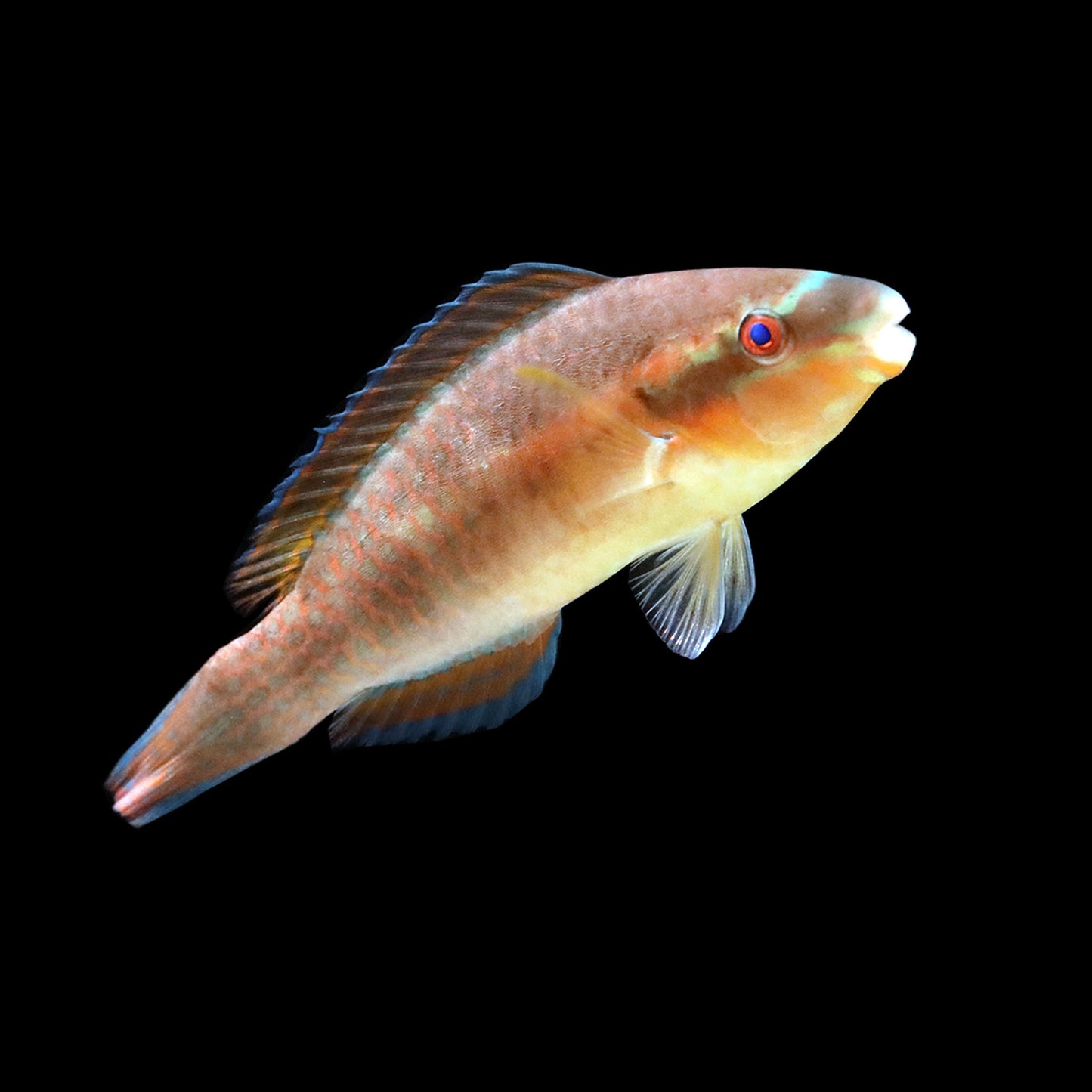AQUARIUM ARTS
Princess Parrotfish (Scarus taeniopterus)
Princess Parrotfish (Scarus taeniopterus)
Couldn't load pickup availability
Description:
Behavior: The Princess Parrotfish is a peaceful and active species known for its striking coloration and energetic swimming behavior. These fish are generally non-aggressive and can coexist well with other peaceful tankmates. They thrive in well-structured environments with plenty of live rock, caves, and open swimming areas. Princess Parrotfish are known for their constant grazing on algae-covered surfaces, helping to keep the aquarium clean.
Color: The Princess Parrotfish is visually stunning, featuring a body that can range from bright blue to green with intricate patterns and markings. Juveniles and adults exhibit different color patterns, with juveniles typically showing a more subdued coloration that becomes more vibrant as they mature. Adults may display beautiful hues of blue, green, and yellow with intricate lines and spots across their body.
Diet: Princess Parrotfish are primarily herbivores and thrive on a diet rich in marine algae. They will graze on algae growing in the tank and should be provided with a variety of seaweed and algae-based foods. Supplementing their diet with high-quality flake food, pellets, and occasional vegetable treats like blanched spinach or zucchini can help maintain their health and vibrant coloration.
Tankmates: Princess Parrotfish are generally peaceful and can be housed with a variety of other non-aggressive marine species. Suitable tankmates include clownfish, gobies, tangs, and other peaceful fish. Avoid housing them with overly aggressive species that may intimidate them or compete for food.
Reef Aquarium Compatibility: Princess Parrotfish are not considered reef-safe as they are known to chew on stony corals and other hard surfaces. Their constant grazing behavior can damage delicate corals and disrupt the substrate. They are best kept in fish-only setups or carefully monitored mixed tanks.
Max Size: Princess Parrotfish can grow up to 12 inches (30 cm) in length. Due to their large size and active nature, they require a spacious aquarium of at least 125 gallons to thrive and maintain good water quality.
Origin: Princess Parrotfish are commonly found in the Western Atlantic region, particularly around the waters of the Caribbean, including the Bahamas and Florida.
Sexual Dimorphism: Princess Parrotfish exhibit sexual dimorphism, with males displaying more vibrant coloration compared to females. The coloration and patterns of the males are more pronounced, making them stand out in the aquarium.
Interesting Facts:
-
Princess Parrotfish are known for their vibrant coloration and intricate patterns, making them a favorite among marine aquarists.
-
They are relatively hardy and can adapt well to captivity with proper care and a well-maintained environment.
-
Princess Parrotfish are active grazers and enjoy exploring their surroundings, helping to keep the aquarium clean by feeding on algae-covered surfaces.
-
Their peaceful nature and unique appearance make them a visually captivating addition to any large marine tank.
Disclaimer: Aquarium Arts cannot guarantee compatibility with your current fish or the fish you buy and cannot be held liable for fish lost due to aggression or coral damage.
Share


